|
Novo
Engine Company in World War Two
Lansing, MI
1880 - 1890 as Cady & Glassbrook
1890 - 1906 as Hildreth Manufacturing Company
1906-1954 as Novo Engine Company
This page updated 8-14-2024.
In the early 20th Century, the Novo Engine
Company of Lansing, MI was a large and significant producer of gasoline
engines and pumps that were sold on a world-wide basis. It was a
continuation of both the Cady & Glassbrook Company and the Hildreth
Manufacturing Company, which were producing engines with the Novo trade
name. In 1906 Clarence E. Bement purchased the Hildreth
Manufacturing Company and renamed it Novo Engine Company. The
company made engines for a variety of uses. These included
pumping, sawing, hoisting, electrical generator sets, and air
compressors. It also built pumps for use with its engines.
This is another one of the Lansing companies
of which I was unaware until I began exploring Lansing's contribution to
the winning of World War Two. While the company was very
successful in the early half of the 20th Century, World War Two was its
last hurrah. In 1949 it filed for bankruptcy and hoped to
reorganize. Instead it was sold off to two different companies.
In March 1950 the Novo Engine Company's foundry was sold to the Detroit
Gray Iron Foundry for $102,000. In December 1950
the main 170,000 square foot machining and assembly plant was sold in
Federal Court to the Schott family of Cincinnati, OH for $630,000.
The intention of the Schott family was to increase production at the
plant and increase employment. However, the days of the Novo
engine were in the past. So, in 1954 the Detroit Gray Iron Foundry purchased it from the Schott
family. The Novo Engine Company was gone. The reason I was
unaware of Novo Engine Company until 2021, is that in 1954 I had not yet
started grade school.
The 170,000 square foot plant, located
on five acres, was subdivided among other
companies in the succeeding years and still exists today. The buildings have been well
maintained and the American Tooling Center is the main, and maybe the
sole, occupant of the facility. See my photos of the plant in "Novo
Plant" section below.
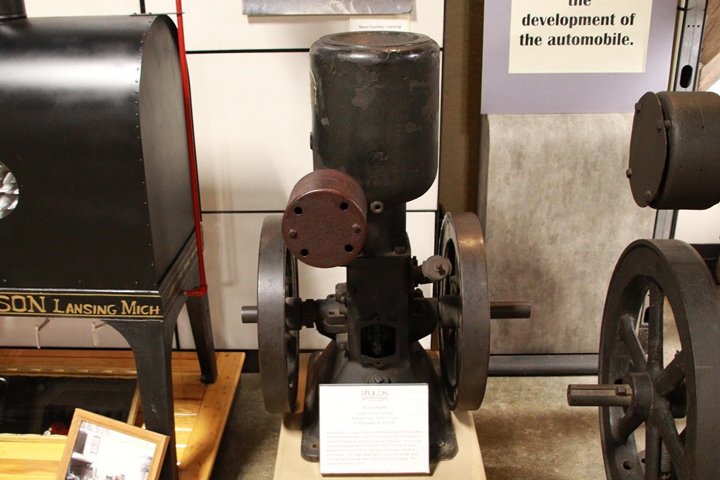
This 1919 Novo engine ran on gasoline,
kerosene, and natural gas. It is on display at the R.E. Olds
Transportation Museum in Lansing, MI. Author's photo.
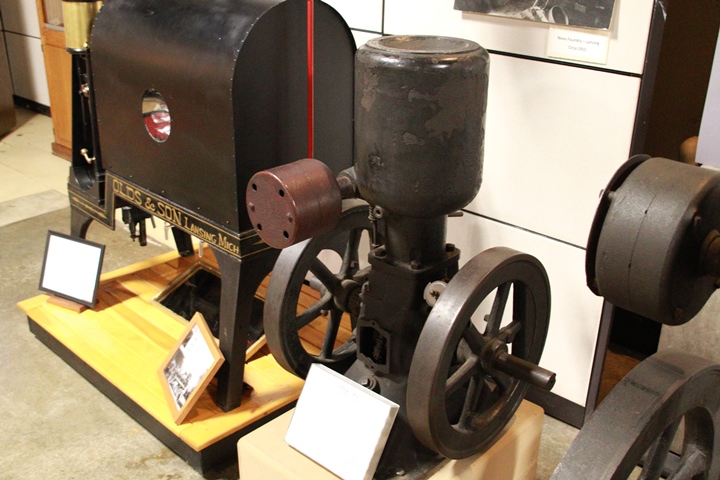
This was a four-stroke water cooled engine
that produced 4hp @ 475 rpm. Author's photo.
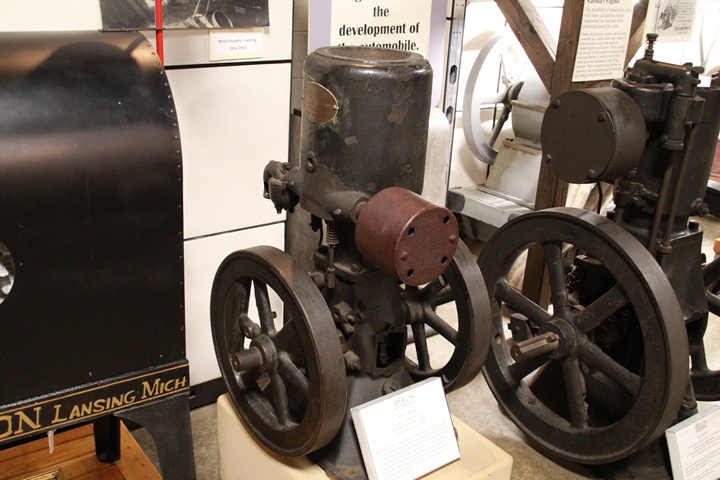
Author's photo.
Novo Company
World War Two Production: During World War Two, the company's five hundred
employees produced $3,959,000 worth of pumps and engines for the
U.S. Treasury Department and the U.S. Army. This amount does not
include any of the sub-contracting work it did for other companies.
With the exception of the first two contracts totaling $456,000
for the U.S. Treasury, all of the remaining $3,509,000 contracts were
with the U.S. Army Corps of Engineers and the Army Chemical Warfare
Section.
Table 1 - Novo Engine Company's
Major World War Two Contracts
The information below
comes from the "Alphabetical Listing of Major War Supply Contracts,
June 1940 through September 1945." This was published by the
Civilian Production Administration, Industrial Statistics Division.
|
|
Product - Customer |
Contract Amount |
Contract Awarded
|
Completion
Date |
| Engines - Treasury |
$228,000 |
1-1942 |
6-1942 |
| Engines - Treasury |
$228,000 |
1-1942 |
5-1942 |
| Pumps - Army Corps of
Engineers |
$83,000 |
10-1942 |
1-1943 |
| Engines Gasoline -
Army Chemical Warfare Section |
$477,000 |
12-1942 |
6-1943 |
| Pumps - Army Corps of
Engineers |
$138,000 |
2-1943 |
11-1943 |
| Engine Assemblies -
Army Chemical Warfare Section |
$378,000 |
4-1943 |
8-1943 |
| Centrifugal Pumps -
Army Corps of Engineers |
$140,000 |
6-1943 |
6-1944 |
| Pumps - Army Corps of
Engineers |
$137,000 |
7-1943 |
11-1944 |
| Centrifugal Pumps -
Army Corps of Engineers |
$216,00 |
9-1943 |
11-1944 |
| Engines - Army Corps
of Engineers |
$91,000 |
10-1943 |
8-1944 |
| Gasoline Engines -
Army Corps of Engineers |
$76,000 |
11-1943 |
9-1944 |
| Gasoline Engines -
Army Corps of Engineers |
$96,000 |
11-1943 |
9-1944 |
| Gasoline Engines -
Army Corps of Engineers |
$81,000 |
11-1943 |
10-1944 |
| Diaphragm Pumps -
Army Corps of Engineers |
$163,000 |
11-1943 |
12-1944 |
| Centrifugal Pumps -
Army Corps of Engineers |
$632,000 |
5-1944 |
12-1945 |
| Engineers Equipment -
Army Corps of Engineers |
$88,000 |
12-1944 |
12-1945 |
| Centrifugal Pumps -
Army Corps of Engineers |
$282,000 |
1-1945 |
12-1945 |
| Diaphragm Pumps -
Army Corps of Engineers |
$425,000 |
1-1945 |
12-1945 |
| Total |
$3,959,000 |
|
|
Not included in the contracts listed above was
that the Novo Engine Company produced four cylinder gas engines used on
U.S. Navy Landing Craft, Infantry, (Large) (LCI(L)) during World War
Two. With no Navy contracts, these gas engines were contracted
directly with the builders of the LCI(L)s.
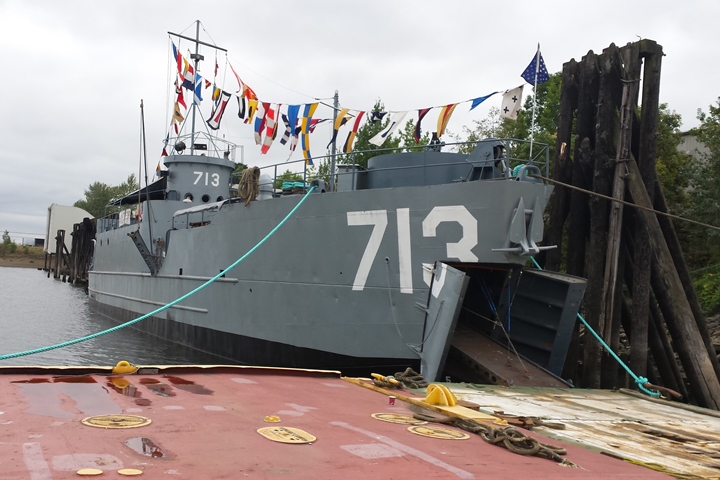
Mr. Michael Wright found a Novo Engine
Company gas engine on LCI 713 in Portland, OR. Mr. Wright's photos
have revealed an unknown application for Novo engines during World War
Two. Photo courtesy of Michael Wright added 8-14-2024.
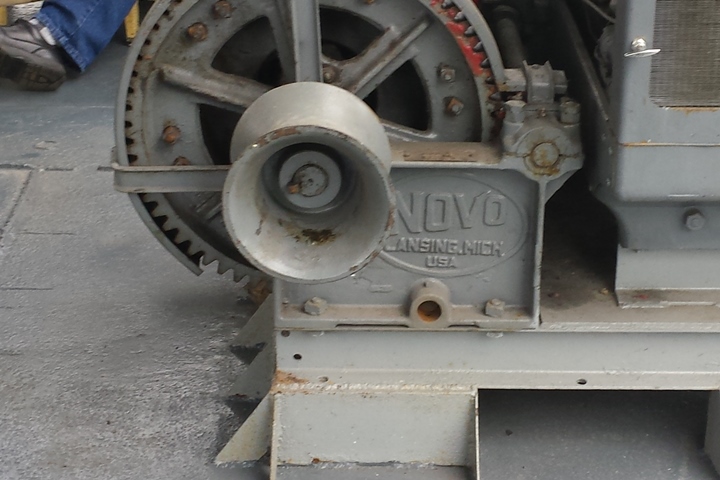
This is the only World War Two application
that has been found so far for this company. Photo courtesy of
Michael Wright added 8-14-2024.
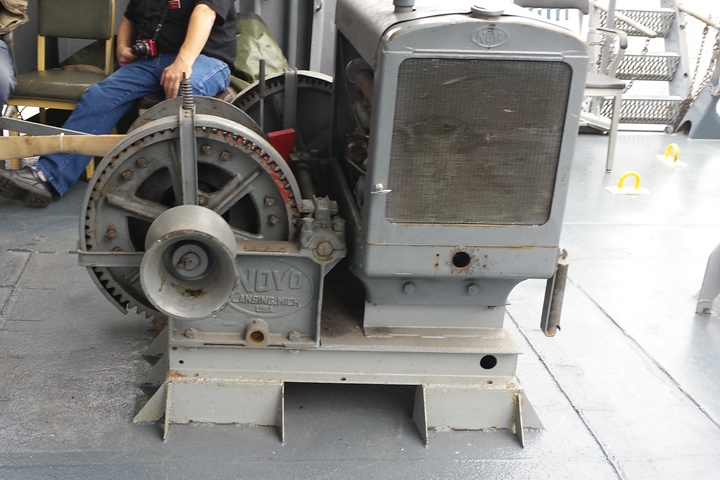
Photo courtesy of Michael Wright added
8-14-2024.
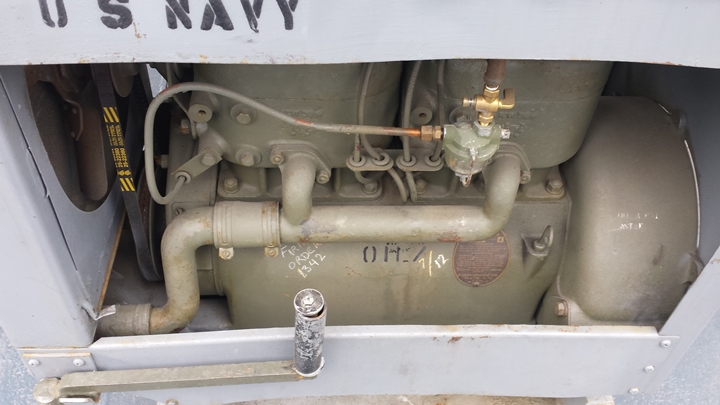
Photo courtesy of Michael Wright added
8-14-2024.

Photo courtesy of Michael Wright added
8-14-2024.
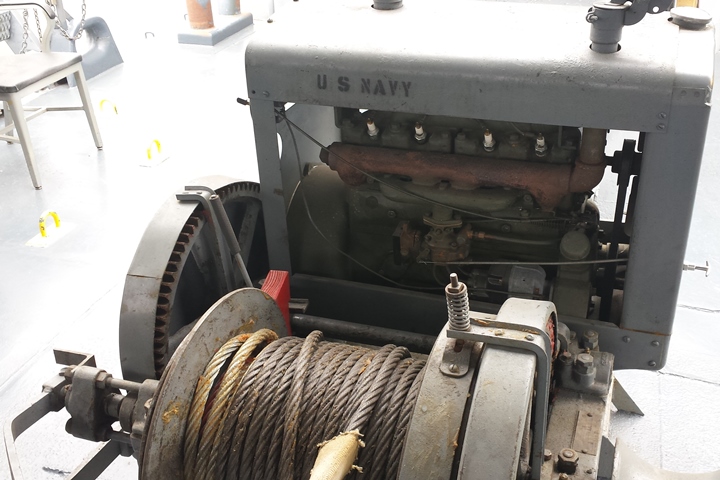
This image shows the four spark plugs
and the exhaust manifold. The engine drives the
attached winch that raises and lowers the bow ramp. Photo courtesy
of Michael Wright added 8-14-2024.
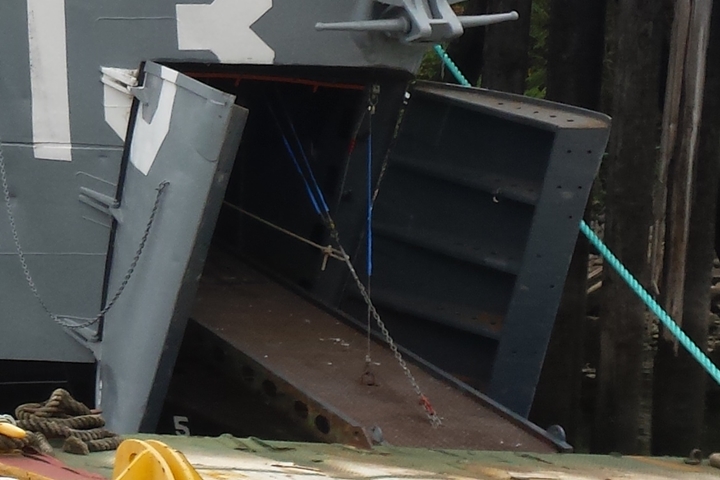
There are two cables that work together to
raise and lower the ramp. It would appear that the one with the
chain connecting to the ramp is the one operated by the Novo Engine
Company-built engine and winch. This is due to the fact the engine
and winch are located on the upper deck and the cable with the chain on
it comes from that location. Photo courtesy of Michael Wright
added 8-14-2024.
The LCI(L) was a beaching type landing craft
that was designed to deliver 188 troops directly to the beach. It
had a crew of three officers and 21 enlisted personnel.
LCI(L) 713 was one of 27 LCI(L)s built with
the bow doors and ramp by the
George Lawley & Sons Shipbuilding Corporation of Neponset, MA. The original series of LCI(L) did not have the
bow doors and the soldiers exited the landing craft by ramps on either
side of the bow. During a hostile beach landing this subjected the
soldiers to enemy fire. It was considered safer to allow the
soldiers to exit via the bow of the landing craft.
Starting on June 1, 1944, LCI(L), production
at four shipyards began building this version of the LCI(L) with the bow
doors and ramp.
|
Table 2 - LCI(L) Production with Bow Doors and Ramps |
|
Boat Numbers |
Quantity |
Shipbuilder |
| 402 |
1 |
George Lawley & Sons Shipbuilding Corporation,
Neponset, MA |
|
641-657 |
17 |
New
Jersey Shipbuilding Corporation, Barber, NJ |
|
691-716 |
26 |
George Lawley & Sons Shipbuilding Corporation, Neponset,
MA |
|
762-780 |
19 |
Commercial Iron Works, Portland OR |
|
782-821 |
40 |
New
Jersey Shipbuilding Corporation, Barber, NJ |
|
866-884 |
19 |
New
Jersey Shipbuilding Corporation, Barber, NJ |
|
1024-1033 |
22 |
Albina Engine and Machine Works, Portland OR |
|
Total |
144 |
|
Assuming that all four builders of the LCI(L)s
with bow ramps and doors all used the Novo Engine Company units, Novo
furnished 144 of these engines and winches for the war effort.
The Novo Plant: The
historical record indicates that Novo moved to this location in 1912.
Today, the plant is still in existence.
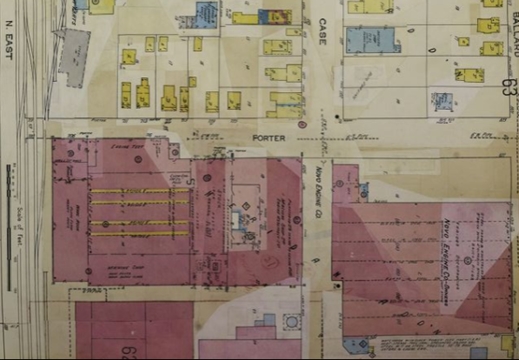
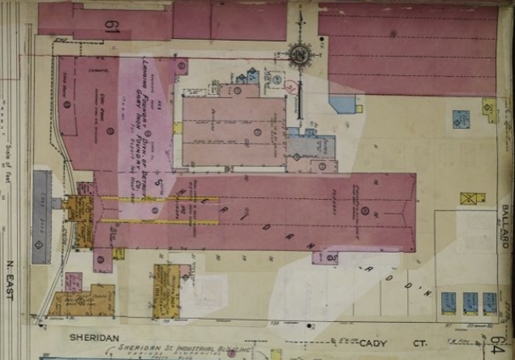
This Sanborn map shows the Novo Engine Company's
main plant in 1951. This is when it was owned by the Schott
Family. The plant would have looked very similar to this during
World War Two.
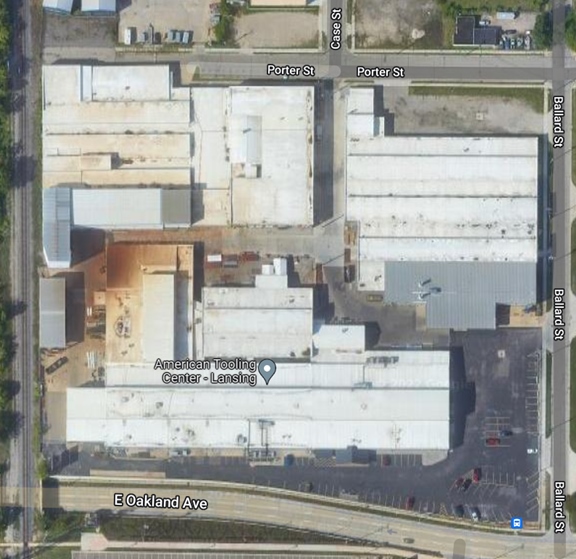
This current Google Maps satellite view
shows that the former Novo factory still exists just as it did in 1951.
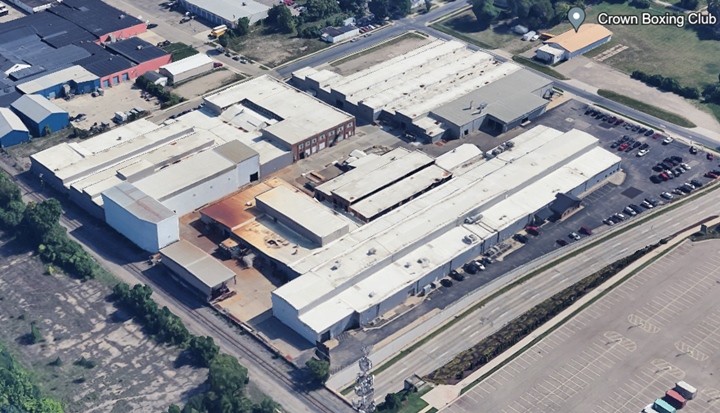
This Google Earth view gives an excellent
overview of the former Novo Engine Company facility. Image added
8-14-2024.
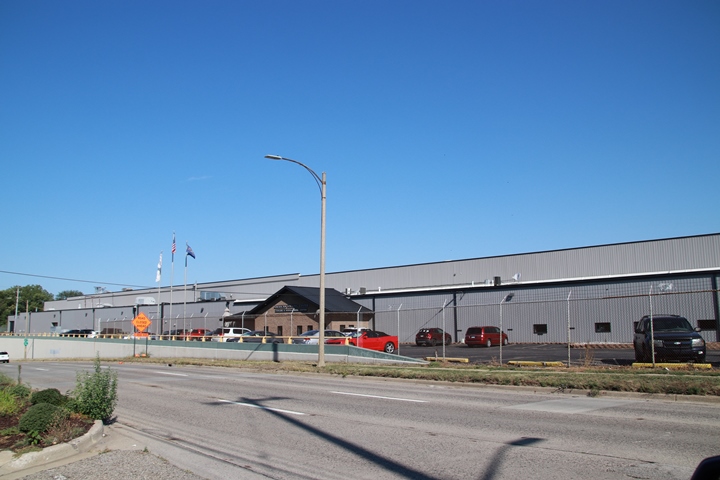
This is looking at the south side of the
former Novo plant. It is now the American Tooling Center.
The street used to be Sheridan Street. It is now Oakland Avenue
and is one-way west. Author's photo.
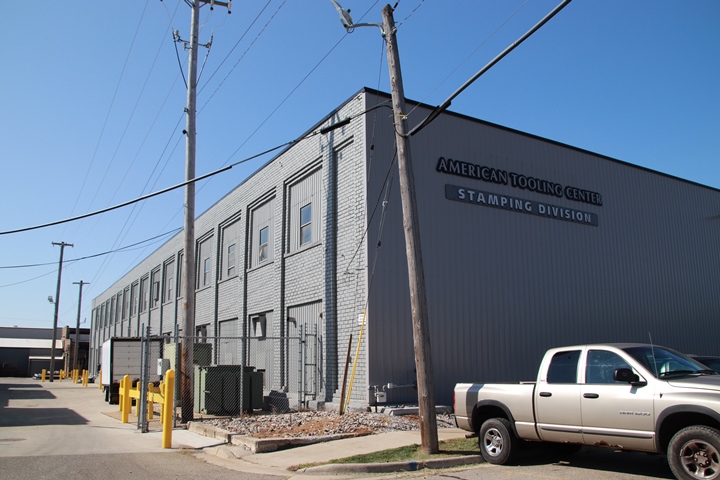
This photo is at the north end of the
complex at the corner of Porter and Cass Streets. Cass Street used
to run to the south along the building. The original brick has
been painted over and the windows partially covered up. The
building is in excellent condition. Author's photo.
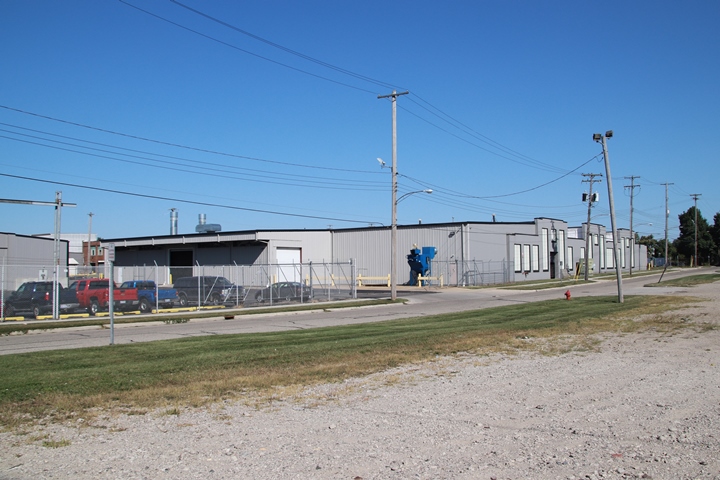
This is the east side of the former Novo
plant complex along Ballard Street. Near the left of the photo, a
small section of the original red brick building can be seen.
Author's photo.
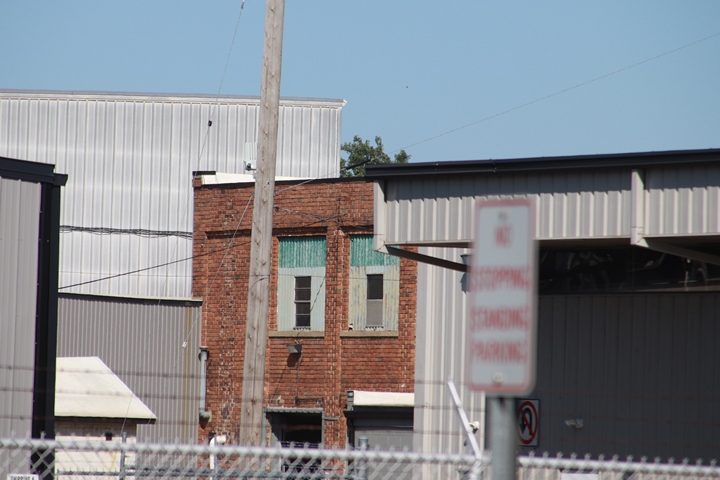
This is that area. Author's photo.
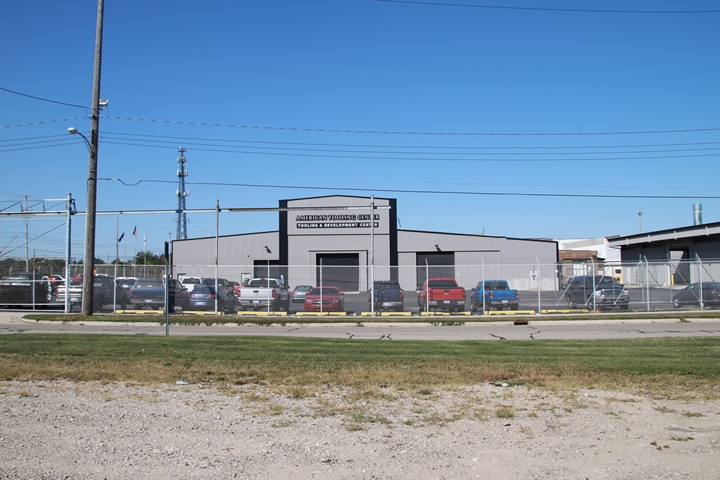
This is the east end of the south building.
To the right part of the photo, more original brick can be seen.
Author's photo.
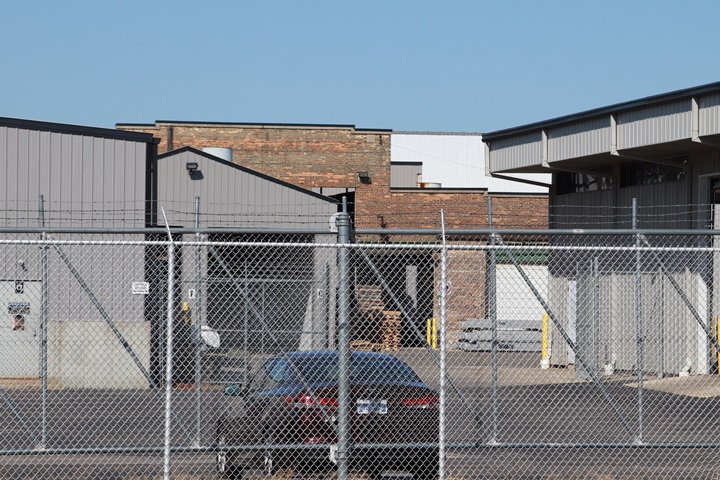
The original brick of the former Novo Engine
Company can be seen in this photo. Author's photo.
|



















